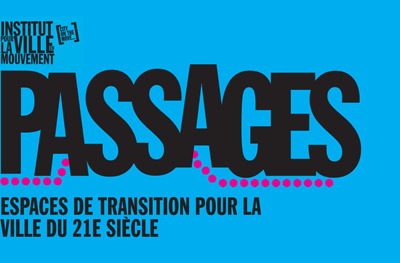To open passages is to reinforce the right to the city
Because the construction of high-speed infrastructures and large development projects has fragmented the city and isolated neighbourhoods;
Because a fragmented city is a city that offers less quality and less security for the most vulnerable;
Because citizens demand attention for their day-to-day mobility, even for what may seem an ordinary journey;
Because – for reasons of efficiency, cohesion, public health and frugality – the city needs to become more intermodal:
1- To provide passage is to assert the rights of the citizen, a condition of contemporary urban vitality.
2- To provide passage is to connect the fragments of the city, a condition of open neighbourhoods.
3- To provide passage is to identify yesterday’s barriers and to anticipate tomorrow’s obstacles, to establish, re-establish and maintain places where large-scale transport routes can be crossed.
4- To provide passage is to map and create linking networks across medium-scale isolated areas: ghettos of the rich or poor, business zones, hypermarkets, condominiums, hospital complexes.
5- To provide passage is to implement policies that prevent the insidious emergence of new barriers, even small-scale (street furniture, road signs and display panels, bicycle and scooter parking).
6- To provide passage is to support growing diversity in individual travel modes (walking, rolling, sliding), in access to amenities (car sharing, bike sharing…) and in the design of roads and infrastructures.
7- To provide passage is to counteract the breakdown between different modes and rates of travel, by means of connecting spaces, a condition of multimodality for all in the city.
8- To provide passage is to add information, services and amenities – whether physical or digital; green transport hubs arouse the desire to experience the places around them; the functionality of the link should combine with the vitality of the place.
9- To provide passage is to consider visual, acoustic, dynamic and proprioceptive effects. The vitality of the place should combine with the sensation of movement, of landscape and the perception of transition to other places.
10- To provide passage is to facilitate shortcuts through the urban environment, the dynamics of the body in motion, the movements of small interconnected vehicles, the efficiencies of generalised intermodality to avoid detours and delays
11- To provide passage is to adapt passages to the local topography and practices of the places they link, but also to inspire new uses. For each single place , one single link.
12- To provide passage is to create a transitional space which adapts to the characteristics and changes of metropolitan ways of life: making a milieu of resources for the augmented pedestrian, enhancing sensory experience, whether ordinary or new. For each single link, a specific transition.
13- To provide passage is to take seriously the small scale that changes everything in a multiplicity of aspects and actors, to devise methods of joint financing, to care for existing qualities in establishing the ecosystem of interconnected mobilities. From each single passage, a network of passages…
